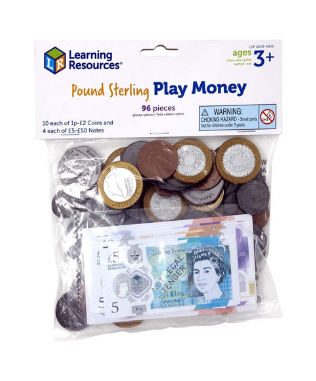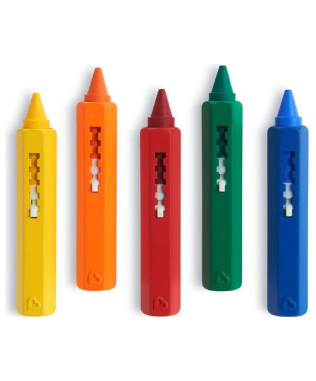Ioan has started learning about money. He understands which coins and notes you get, but was struggling to recognise the value of each one without reading what it says. With us barely using cash to pay for things any more, he doesn’t have many opportunities to handle it. This was just a chance to become more familiar with what the coins and notes look like.
Resources
- Money
- Bath crayons
Method
To start off, Ioan explained which types of coins he knew you could get.
Then he started looking for amounts of money which added up to £5.
Ioan recognised that when he moved his two amounts of £5 close together, that it then looked like £10, so decided to separate them.
He started spreading the money around the tray, making it easier to group like amounts.
Next, Ioan fetched a bath crayon and used it to split the tray into sections.
Now that he had a system, he started working out how much all his notes were worth and putting them in the right area on his tray.
Then, he moved onto sorting the coins into the right sections.
Yoshi remembered that he always has to check his answers.
I knew it wouldn’t be long before Finn wandered in to see what was going on. Ioan happily showed him what he’d been up to, then he took some pictures of the money he had sorted.
I knew from Finny’s face that he was going to ask to do a tray himself. Having never looked at money before we decided to start right back at the start.
DfES Outcomes for EYFS and National Curriculum (2013)
Numeracy Year 2 programme of study
Measurement
- recognise and use symbols for pounds (£) and pence (p); combine amounts to make a particular value
- find different combinations of coins that equal the same amounts of money
- solve simple problems in a practical context involving addition and subtraction of money of the same unit



















